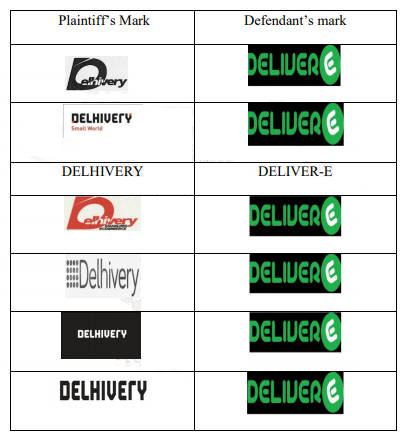Dinesh Chandra Vaghani and Ors. Vs. Union of India (UOI) and Ors.
Dinesh Chandra Vaghani and Ors. Vs. Union of India (UOI) and Ors.
2010 (42) PTC 456(Del)
Petitioners 1 to 5 had initially set up a partnership firm under the name of M/s. Milton Plastics and had been carrying on the business of manufacturing and marketing under the trade mark and trade name ‘Milton’. A Memorandum of Understanding was signed between Petitioners 1 to 5 as partners on one hand and Petitioners 1 to 5 as individuals on the other whereby the proprietary right and the ownership of the trade mark Milton was withdrawn from the partnership firm. By the same MoU a licence was granted to the firm to continue using the trade mark Milton.
In 1992 the partnership firm was converted into a limited company. Company thus became a successor-in-interest of the erstwhile firm. Later, Petitioners 1 to 5 granted a licence to Petitioner No. 6, i.e. Company to continue marketing the goods using the trade mark MILTON.
It was claimed that Petitioners 1 to 5 being the joint proprietors in terms of Section 24 of the Trade Marks Act, 1999 jointly have the statutory right to the exclusive use of the trade mark Milton.
When the petitioners became aware of the Respondent’s mark ‘MILTON’, they filed an application before the IPAB under Section 57 of the Act seeking cancellation of the said mark. The Petitioners filed the rectification application, in two parts i.e. Form 1 as well as Statement of Case with a supporting affidavit. An error had crept into Form 1 as well as in the Statement of Case wiled with the Rectification Petitioner. In Form 1, Company was shown as the sole Petitioner whereas in the Statement of Case the names of the Petitioners 1 to 6 were shown.
The IPAB held that apart from the discrepancies in Form 1, when compared with the Statement of Case filed by the Petitioners, there could not be more than one applicant in an application for rectification. It was held that the licensee’s rights are traceable to the registered proprietor and therefore there was no question of the licensee becoming a co-applicant. It was observed that the registered proprietor could protect his statutory rights independently and initiate rectification proceedings. The rectification application was consequently dismissed as being not maintainable.
As the Petitioners had made IPAB a party to the proceeding, the Court observed that “that the Respondent IPAB ought not to have been impleaded as Respondent No. 2 in this petition. An authority whose order is under challenge in a writ petition cannot possibly be made a party to the writ petition. “
ISSUE:
Whether the IPAB was right in its understanding that an application for rectification could be filed by only one person in terms of Section 57 of the Act.
The Court answered the said issue in negative on the following grounds:
• Merely because Section 57 uses the singular ‘person’, it cannot ipso facto mean that it does not include the plural.
• As long as the context does not indicate otherwise, it is perfectly possible that the word ‘person’ would include ‘persons’ as well.
• There could be many contexts where more than one person could jointly file an application under Section 57 of the Act. Under Section 24(2) of the Act it is possible that more than one person is interested in a trade mark and, therefore, such persons may be registered as joint proprietors of the trade mark.
• Therefore there are contexts envisaged in the Act itself that make it possible for more than one applicant to join in an application for rectification.
• There is nothing in the Rules to indicate that an application for rectification can be filed only by one person.
• The use of the words ‘I/We’ and ‘my/our’ in Form I indicates that it is perfectly possible for more than one person to be an applicant in terms of Form 1.
• Rule 3 of the IPAB Procedure Rules requires the application to be filed “by an aggrieved person”. In the context in which the said word is used in Rule 3 it would include ‘persons’ as well.
HELD:
“Consequently, this Court is unable to concur with the view expressed by the IPAB that an application for rectification can be filed only by an individual applicant and that more than one applicant cannot join in the making of such an application for rectification.”


